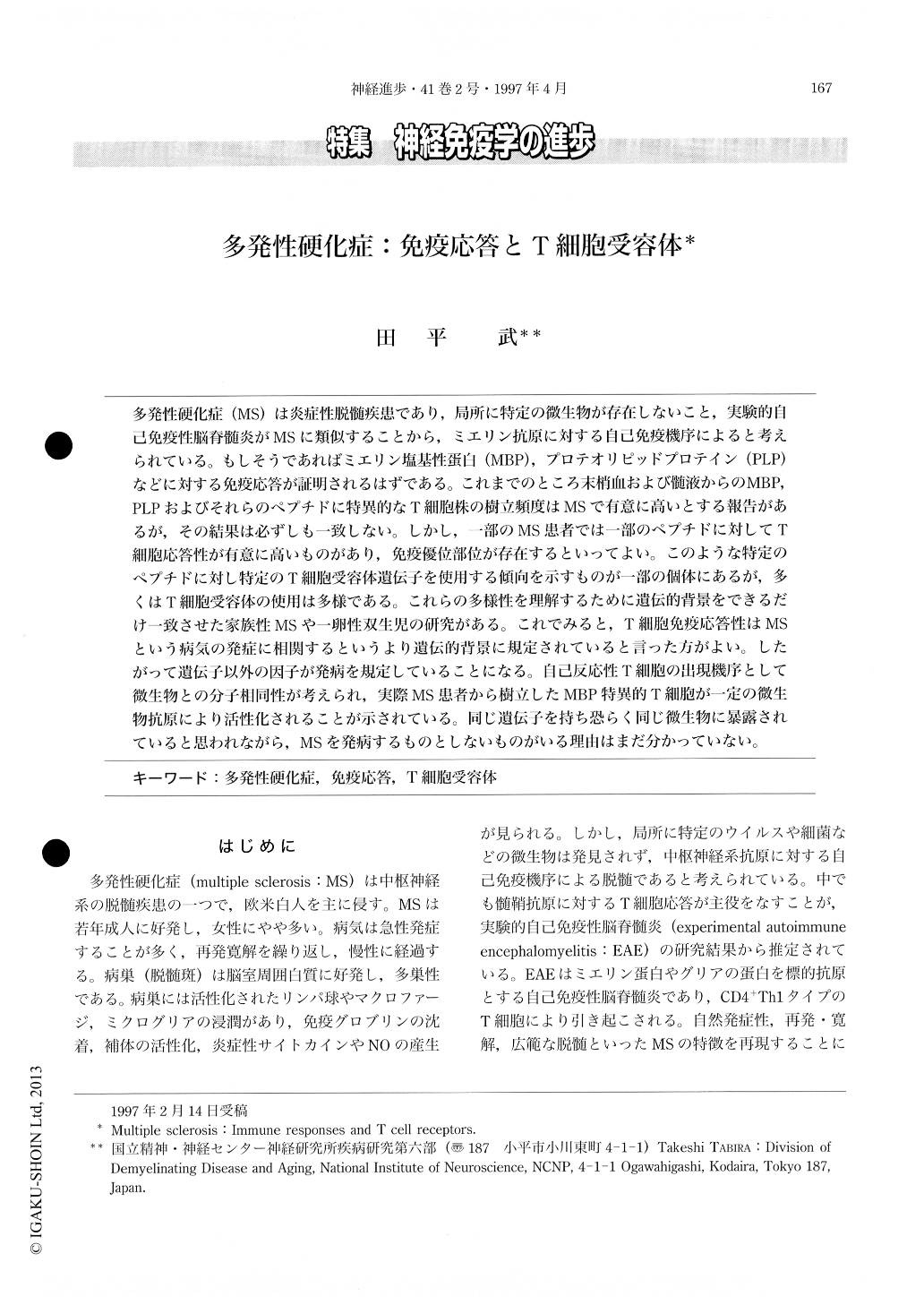Japanese
English
- 有料閲覧
- Abstract 文献概要
- 1ページ目 Look Inside
多発性硬化症(MS)は炎症性脱髄疾患であり,局所に特定の微生物が存在しないこと,実験的自己免疫性脳脊髄炎がMSに類似することから,ミエリン抗原に対する自己免疫機序によると考えられている。もしそうであればミエリン塩基性蛋自(MBP),プロテオリピッドプロテイン(PLP)などに対する免疫応答が証明されるはずである。これまでのところ末梢血および髄液からのMBP,PLPおよびそれらのペプチドに特異的なT細胞株の樹立頻度はMSで有意に高いとする報告があるが,その結果は必ずしも一致しない。しかし,一部のMS患者では一部のペプチドに対してT細胞応答性が有意に高いものがあり,免疫優位部位が存在するといってよい。このような特定のペプチドに対し特定のT細胞受容体遺伝子を使用する傾向を示すものが一部の個体にあるが,多くはT細胞受容体の使用は多様である。これらの多様性を理解するために遺伝的背景をできるだけ一致させた家族性MSや一卵性双生児の研究がある。
Multiple sclerosis (MS) is an autoimmune demyelinating disease of the central nervous system. From the similarities to experimental autoimmune encephalomyelitis (EAE), T cell immune responses to myelin antigens and T cell receptor gene usage were extensively analyzed in MS patients. Although the results were variable, existence and persistence of T cell response to certain epitopes of myelin basic protein and proteolipid protein peptides and the certain T cell receptor gene usage were found in certain but not all MS patients due to heterogeneity in the genetic background.

Copyright © 1997, Igaku-Shoin Ltd. All rights reserved.


